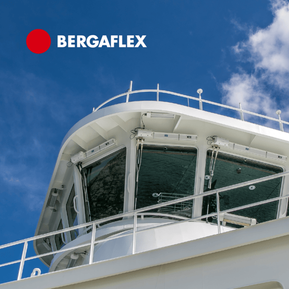MAN Engines Selected for CO2 Carrier
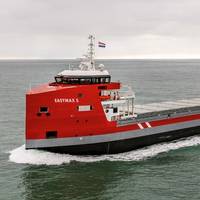
The Royal Niestern Sander shipyard in the Netherlands has ordered 2 × MAN 16V175D MEM engines (2,400 kWm/1,800 rpm) in connection with the building of an MPV (Multi-Purpose Vessel) vessel – ‘Easymax 5’ – for Dutch outfit, Wagenborg Operator.The engines will be employed as gensets for power generation aboard the purpose-built CO2 carrier, which will be employed in the offshore, substrate storage of CO2.The vessel will be the fifth under the EasyMax concept jointly developed by Wagenborg and Niestern Sander with a cargo capacity of 14,000 tons.
SAAM Towage and Caterpillar Marine Partner on Electrification, Alternative Fuels
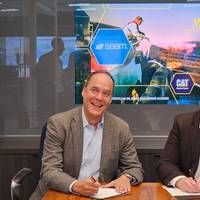
AAM Towage and Caterpillar Marine signed a Memorandum of Understanding (MOU), to evaluate and implement alternative power solutions to diesel, including electrification and alternative fuels such as methanol and ethanol, for the tug fleet.Both companies are already working on a dual-fuel engine—the Cat® 3500E—which will use methanol and is expected to begin testing this year.SAAM Towage is active in towage and marine services at more than 90 ports in 13 countries in the Americas.
Wärtsilä’s Engines to Power South American Vessels
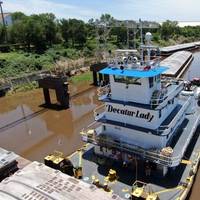
Technology group Wärtsilä has been selected to supply replacement engines for two inland waterway tug pusher vessels operating in Paraguayan rivers.The vessels are owned by ADM Naviera Chaco (ADM). The vessel modifications and new engine installations will be carried out in Asuncion-Paraguay.The new engines will enable a reduction of the environmental impact and increase the efficiency of the tug pushers.ADM’s stated target is to reduce emissions by 25% by 2035, and the advanced…
WinGD Reports ‘Exceptional Results’ for Ammonia Engine Test
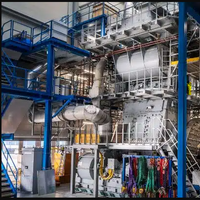
WinGD reports it has confirmed key parameters for its X-DF-A ammonia-fueled engine design after full-load testing at its Engine Research and Innovation Centre in Winterthur in Switzerland.The performance and emission measurements deliver timely assurance as the first users prepare their vessels and auxiliary systems for ammonia fuel.The tests confirm engine performance data that WinGD has published in its General Technical Data (GTD) software, available online, and guaranteed to customers.Operation on ammonia achieved the same thermal efficiency as for diesel fuel…
WinGD Getting Ready to Deliver ‘Biggest’ Methanol-Fueled Engine Built to Date
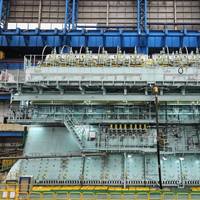
Swiss marine power company WinGD’s first methanol-fueled engine is to be delivered to shipyard after passing factory and type approval tests, ahead of installation in 16,000 TEU container ship.The ten-cylinder, 92 bore X-DF-M engine is said to be the biggest methanol-fueled engine built to date.There are 56 X-DF-M engines on order across bore sizes ranging from 52 to 92, in similar cylinder configurations and engine rating fields as diesel-fueled X-Engines.The addition of methanol…
WinGD’s New Ammonia-Fueled Engine Passes Initial Trials
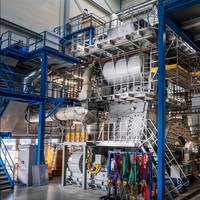
Swiss marine power company WinGD has conducted early testing of its new X-DF-A ammonia-fueled engine design, proving that the key parameters are in line with expectations.A 52-bore single-cylinder version of the X-DF-A engine is running at the company’s Engine Research and Innovation Centre (ERIC) in Winterthur, with final validation to be completed in time for the first engine deliveries in June 2025.Single-cylinder testing will allow rapid validation of the ammonia combustion system under engine conditions…
WinGD to Supply 16 Dual-Fuel Engines for Eight LNG Carriers

Swiss marine power company WinGD has received an order for 16 X-DF dual-fuel engines for eight liquefied natural gas (LNG) carriers, after a late-stage switch by a major ship owner.The order was received relatively late in the newbuilding planning phase as operational and delivery concerns arose around the engines originally selected, according to WinGD.Despite the timing, close collaboration with engine builder, yard and shipowner – which already uses X-DF engines on several…
IACS Updates Unified Requirement on Crankcase Explosions

As the industry shifts towards alternative fuels in response to environmental regulations and sustainability goals, the safety risks associated with these fuels cannot be overlooked, says the International Association of Classification Societies (IACS). Crankcase explosions, a critical hazard in engine operation, becomes even more concerning in the context of gas and low flashpoint fuels. IACS has therefore published the latest edition of Unified Requirement (UR) M10, which introduces…
When it Comes to Workboat Engines, the Future is Flexible
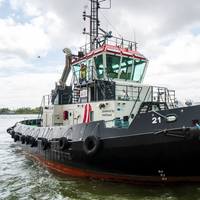
Vessel owners are making new fuel choices, but increasingly, they have options to help reduce the risk of doing so.The latest engine developments aim to make it easier for owners to avoid the chicken-and-egg fuel price and availability risks of new fuels.As Roger Holm, President of Wärtsilä Marine and Executive Vice President at Wärtsilä Corporation recently pointed out, the challenge is that owners won’t commit to a fuel today that is expensive, only produced in small quantities and may be usurped by another fuel that scales faster and more affordably.
MAN Engines Introduces New MAN D3872 Engine
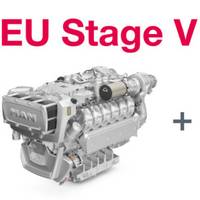
In the course of the market launch of the MAN D3872 for workboats, MAN Engines is expanding its portfolio with additional performance for heavy-duty applications. The new MAN D3872 in the LE427 variant for heavy-duty applications has an output of 920 kW (1,250 hp) at 1,800 rpm and is equipped with an exhaust gas aftertreatment system consisting of a diesel particulate filter and SCR system.This means that the engine meets the strict emission standards of the EU Stage V for inland navigation with the limits of 1.8 g/kWh nitrogen oxides (NOx)…
New Product: Cylinder Scuffing Detection Tool
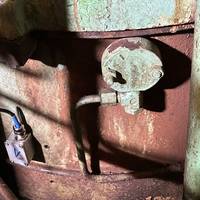
Ships trials reportedly confirmed that CM Technologies’ new scuffing sensor can detect early onset cylinder wear in marine diesel engines. Trials onboard a number of large containerships and a two-stroke engine Baltic ferry showed it was possible to measure the friction in the cylinder when the engine is running.CMT noted a trend in cylinder liner scuffing following the widespread use of 0-0.50% low sulphur fuel (LSF). These fuels together with insufficient or over lubrication…
NYK Opens Future Fuels Engine Facility
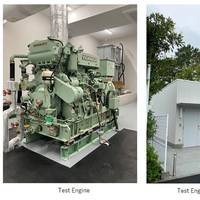
On October 1, 2024, NYK began operation of a test engine facility in Chiba Prefecture to evaluate the safety of new fuels.The introduction of new marine fuels used to necessitate testing and analysis at external engine facilities, in addition to trial operations, all of which would require about two years to complete. Shortening this period and reducing the cost of testing have been key to meeting the increasing demand for new fuels, such as biofuels, and satisfying the environmental regulatory measures of various countries.
MAN Engines Introduces New V12 Workboat Engine
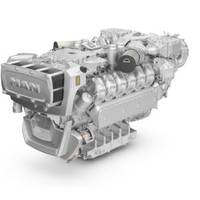
MAN Engines has introduced its MAN D3872 LE432 workboat engine with a displacement of 30 liters.The V12 engine has an output of 1,213kW (1,650hp) at 2,100rpm, making it suitable for medium-duty applications such as wind farm supply vessels, ferries, passenger ships and fishing boats.Further power variants of the MAN D3872 (1,471 and 1,618kW or 2,000 and 2,200hp at 2,300 rpm) for light applications have already started in production.The MAN D3872 engine has a completely new basic engine and benefits from improved coolant delivery through a new coolant pump and thermostat housing…
MAN Introduces New Four-Stroke Injection System
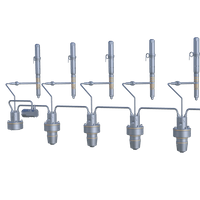
MAN Energy Solutions has announced a new generation of its Common Rail injection system for its medium-speed, four-stroke engine portfolio.Its core components comprise an optimised and uniform high-pressure pump and a newly developed injector, integrating the CR 1.6 valve group and making the entire system setup more coherent. It is initially being introduced via the MAN 49/60DF engine.MAN Energy Solutions reports that CR 2.2 can boast of up to 38% increased rail-pressure for all applications, and over 33% increased target time-between-overhaul intervals for most components.
Auramarine Launches Ammonia Fuel Supply System
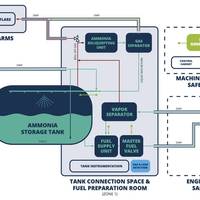
Auramarine has launched an ammonia fuel supply system designed in adherence to all safety, design and material requirements for the fuel.The system is suitable for both two-stroke and four-stroke engines as well as other ammonia consumers. Safety measures include gas and leak detection, ammonia capture, reliquefying and ammonia release mitigation functions.The system has been developed in collaboration with experts on ammonia as well as using findings from the HENNES research…
Chevron Marine Lubricants Highlights Solutions at SMM

Chevron Marine Lubricants has experts at SMM 2024 demonstrating how the company is leveraging the synergy across its products and services to develop a suite of solutions designed to help lower the carbon intensity of the marine sector while aligning with global carbon emission goals.One example is Chevron’s taro ultra advanced 40 which has been granted gas validation status by WinGD. It covers all WinGD gas (LNG burning) engines and follows the previously granted ‘gas general use’ approval…
Operational Study: Methane Slip Varies with Engine Load

The Transport Emission Control Team at VTT Technical Research Centre of Finland has released a study of methane slip and other emissions from an LNG-powered marine engine operating under real-life conditions.The now published study ‘Methane slip and other emissions from newbuild LNG engine under real-world operation of a state-of-the art cruise ship' details the results of a study conducted on the newbuild cruise ship MSC World Europa. One of its five engines, a Wartsila 46DF…
Eastern Pacific Shipping Chooses Gas Injection Engines for Newbuilds
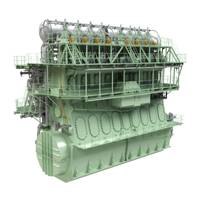
New Times Shipbuilding Co. Ltd. of Jiangsu province, China, has ordered 12 × 8G95ME-GI (Gas Injection) Mk10.5 main engines in connection with the construction of 12 × 18,000 teu container vessels for Singapore’s Eastern Pacific Shipping (EPS).MAN Energy Solutions says the Diesel principle provides the ME-GI engine with high operational stability and efficiency, while also ensuring reliable operation during load changes on gas with just normal additions of pilot-oil amounts. Furthermore, the ME-GI operational principles feature a seamless change-over between gas and diesel operation.Thomas S.
WinGD and CMA CGM to Trial Dual-Fuel Engine Tech at Sea
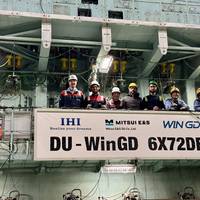
Swiss marine power company WinGD has teamed up with global shipping line CMA CGM to test its Variable Compression Ratio (VCR) technology for dual-fuel engines onboard one of CMA CGM’s vessels.The collaboration marks the first field test for the new dual-fuel engine technology and follows successful factory tests showing significant efficiency improvements with both diesel and LNG fuel.The CMA CGM project comprises a long-term, full-scale test to confirm operability and reliability.Onboard testing is expected to begin following the dry-docking of the vessel in September…
WinGD Completes Type Approval Test on Compact Two-Stroke Engine
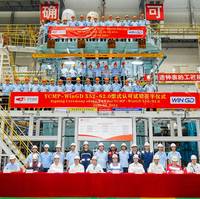
WinGD reports it has successfully completed type approval and factory acceptance testing for its X52-S2.0 engine, bringing a new option to shipowners in need of compact, medium-bore two-stroke engines. The tests at Yuchai Marine Power Co (YCMP) confirmed the engine’s performance and compliance.The X S series succeeds the RT flex50 and RT flex58 engines and is available in 52cm and 62cm bore sizes, with confirmed orders already for diesel, LNG and methanol configurations and an ammonia fuel option under development.
MMMCZCS Calls for Early Regulation of Methane Slip
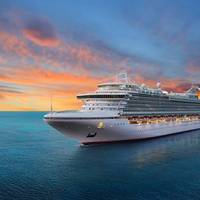
The Maersk Mc-Kinney Møller Center for Zero Carbon Shipping (MMMCZCS) has released a new report: Tackling methane slip in shipping.Past research at the MMMCZCS has demonstrated that current regulations that include methane, such as CO2-equivalent fuel standards (e.g., FuelEU Maritime), will have a limited effect on reducing onboard methane emissions in the short- to mid-term. Furthermore, the default methane slip value concept does not provide a direct incentive to engine makers…
Charlotte Røjgaard Joins CIMAC Board

CIMAC has welcomed Charlotte Røjgaard, Bureau Veritas, as a new board member.She will act as Vice President Working Groups. Røjgaard succeeds Marko Dekena who recently decided to leave the CIMAC Board after many years in various roles.Røjgaard is the Global Marine Fuels Director at Bureau Veritas. She holds a Master of Science degree in Chemical Engineering from the Technical University of Denmark and an executive MBA in Shipping and Logistics from Copenhagen Business School.
WinGD to Supply Engines for AET’s Ammonia-Fueled Aframax Tankers
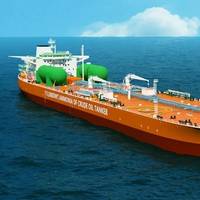
Swiss marine power company WinGD has secured an order for its X‑DF‑A ammonia-fueled engines for what will be the world’s first ammonia dual-fuel Aframax tankers.Two vessels ordered by Singapore based ship owner and operator AET, a petroleum arm of Malaysia’s MISC Group, will be built at Dalian Shipbuilding Industry with six-cylinder X62DF-A engines, the newest addition to WinGD’s clean-fuel engine portfolio.AET recently entered into time charter party (TCP) contract with Petronas'…


